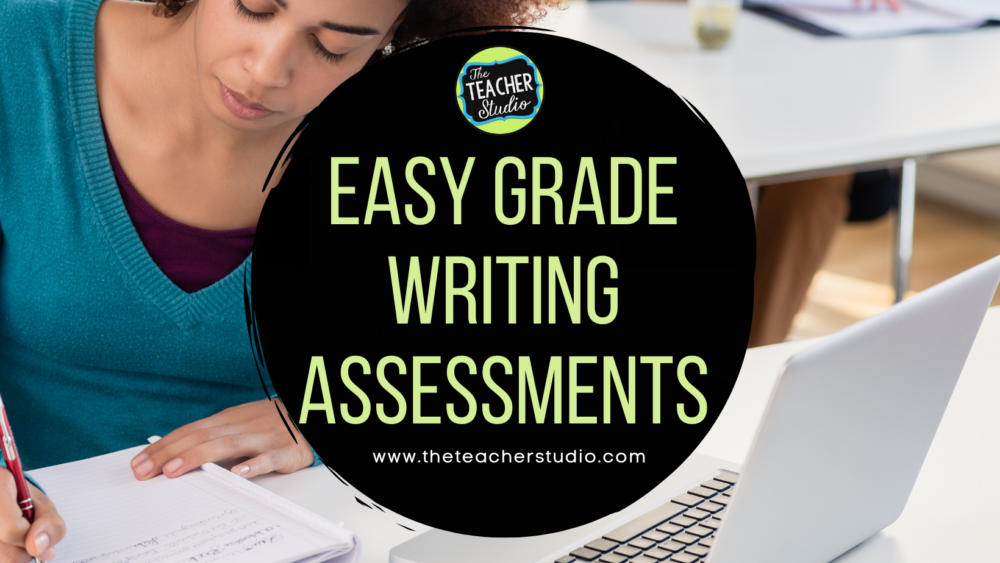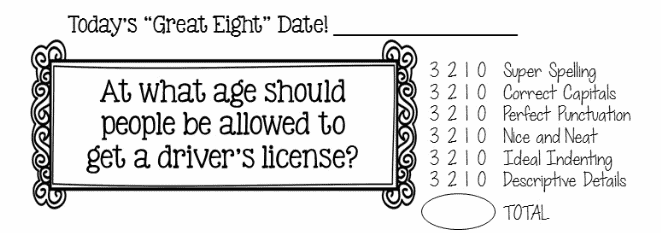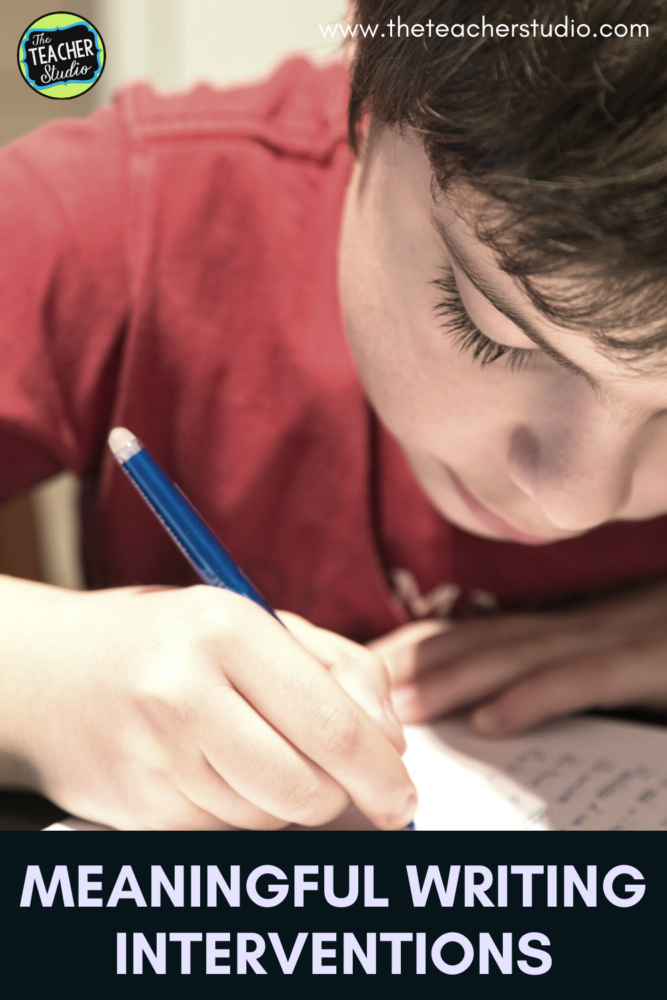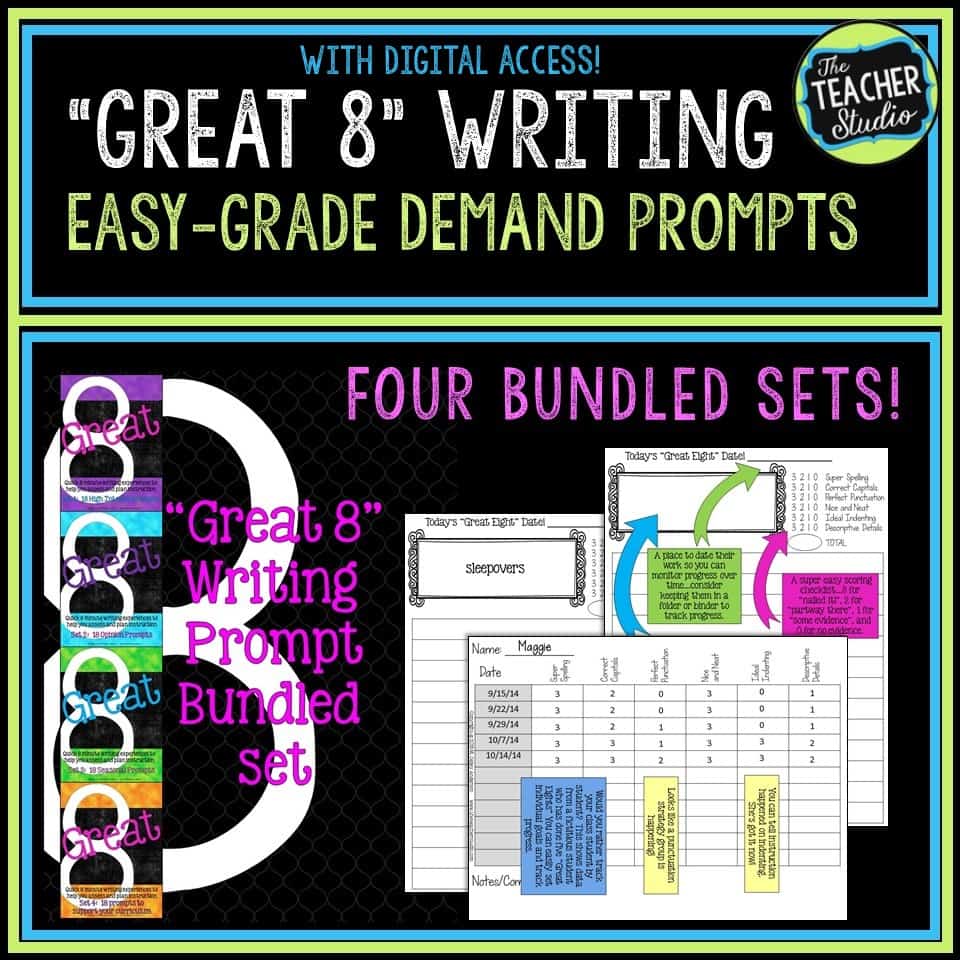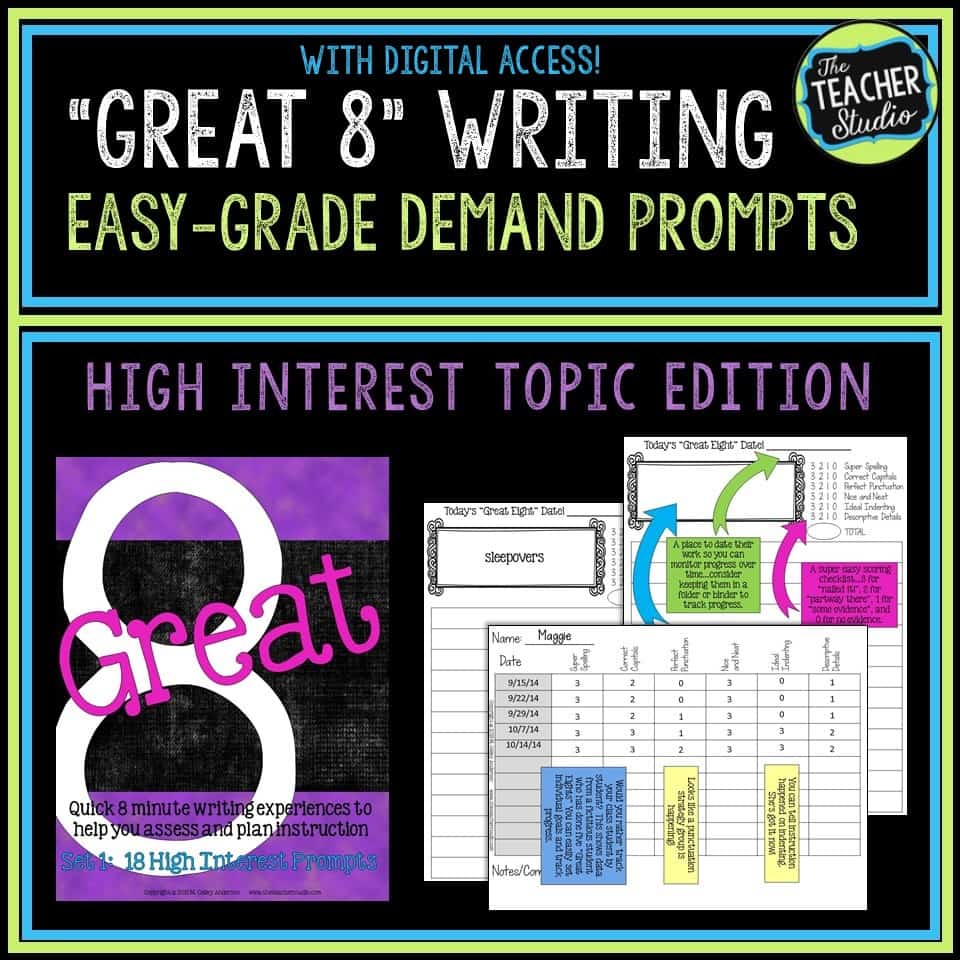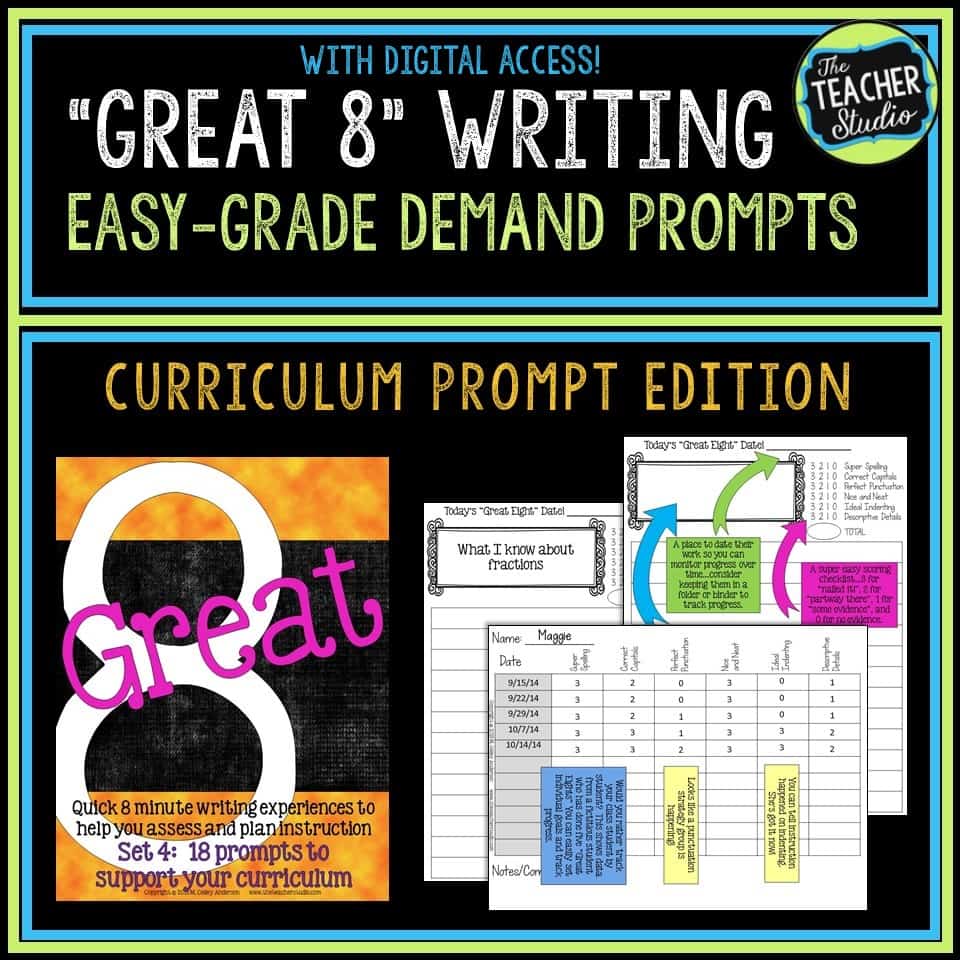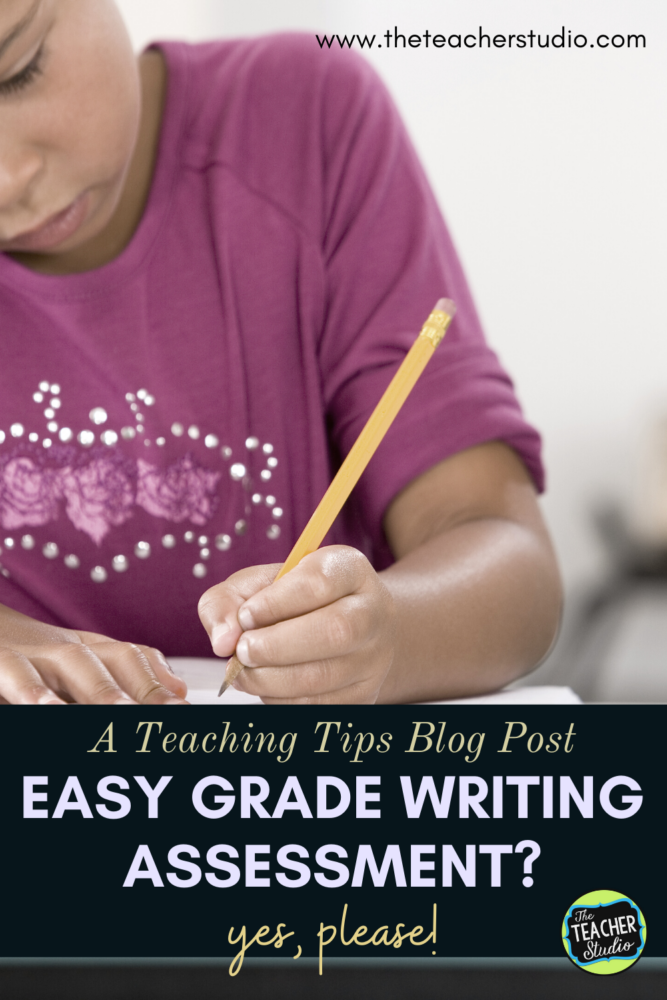


More often than not, writing assessment is something we dread Whether it’s self-imposed restrictions or in-depth rubrics and checklists that take forever to interpret and use–writing assessment is often something we push to the back of our “to do” list. It simply isn’t very glamorous. It isn’t very fun. Quick writing assessments seem like a dream, right?
Unfortunately, the importance of assessing writing cannot be downplayed! Without knowing where our students are, it’s hard to know where to go next with our planning. That being said…
Increase the frequency of assessment
When we create these huge and lofty writing tasks and create assessment tools to match, it makes it impossible to assess often. When we do a huge six week unit and grade only a culminating project, students go far too long without specific feedback. By sprinkling in several shorter (like seriously–I give them EIGHT minutes to write) assessments throughout the unit, I can quickly keep my finger on the pulse of how my students are doing. Eight minutes of class time and maybe 45 total minutes of grading? Totally doable. You can even pick just one or two things you want to look for at a time–maybe you are going to give students ONLY a score for punctuation. Or capitals. Or writing in complete sentences. When you keep things short, it takes less class time AND less scoring time.
Give faster writing feedback
When we give a writing assessment and it takes us forever to grade, there is nothing useful for students. We may get a grade for report cards–but it certainly doesn’t help students. When we can give students quick access to an easy-to-understand checklist, they can take that information and use it. If I see my students aren’t capitalizing well, I want them to work on it TODAY, not when the unit is over. By then, they are checked out and ready for the next thing!
I wanted a down and dirty checklist–not complicated rubrics–to help me assess faster. I am a big fan of grids/lists for assessing. They are visual and fast. Look how easy this is to interpret! I’ve also done something as fast as a post it with a score–when I pass back writing, I tell students that their score (for me–4, 3, 2, 1 but it could be anything) is ONLY based on their capital letters. We can then look back at their writing and try to find places to improve. These scores can SO quickly go into my binder to help me pull small groups.
Improve communication and writing interventions
One of the points of assessment is to communicate with the “stakeholders” about how things are going! When you look at that checklist, you can see six crystal clear writing components that are supercritical for writing success. Each one is something that students (and parents!) can understand. Possibly most importantly, each of these can EASILY turn into an intervention topic. Do you have 6 students who still aren’t indenting? Pull them and work with them. Have a few students who are still not using capitals correctly? Work with them. When you keep all your data in a spreadsheet or chart, it’s easy to see which students need which skills.
Now don’t get me wrong–this is only a PART of how I assess writing! This checklist does NOT account for other key writing skills. It doesn’t address transition words and organization It doesn’t look for quality leads and “voice”. It is truly a basic skills-only deal. There truly is a time and a place for this, right?
But it can be so easy to ask your students to do a “quick write”…maybe about a chapter you just read aloud. Write about a topic you just studied. Write about their favorite animal. It doesn’t matter–we just want them to show us their writing skills!
Use writing data to show growth on specific skills
As students progress through their learning journey, it’s critical for us to be able to show them how they are growing and learning. If a student isn’t indenting at ALL at the start of the year and then, after instruction, moves to a 1 or even a 2 or 3–how satisfying for them to see that making changes in their writing results in growth. By focusing on only one specific skill at a time, it’s much easier for students to take action.
Consider modeling whatever skill you are working on to show what a “3” would be. Write several samples at different levels and ask students to compare and contrast. Pick a piece of work (I like to use work from previous years or another teacher at my school with no names, of course!) and work to make revisions and edits to improve it. There is SO much instructionally that can be done with these little “quick writes”!
Helping students and families see that improvement is happening is so important. We all probably remember getting an essay or other piece of writing back that was marked with a B+ or some other grade. What did that mean? How can I make it better? Young students need far more clear and explicit guidance when trying to make improvements in their writing.
Quick Writing Assessments to the Rescue!
I created a whole series of these quick assessments to address ALL these issues! I want my students to get feedback from me on specific skills in a timely manner. It is essential that this happens in “kid-friendly” terms so that they can learn and grow from the feedback.
I know that writing is complex, and my district has several sophisticated rubrics that we use for district assessments. What I felt was missing was the “nitty-gritty” stuff–those essential writing basics that our rubric ASSUMES students are doing. The simple truth is, many of my fourth graders are still not punctuating or capitalizing correctly. They aren’t writing with careful and varied sentences. They aren’t adding enough detail for me to truly see their writing skills.
If you want to see more student growth in these areas, you might find these 8-minute writing tasks right up your alley as well! I wrote them in four different sets so that I could use them to complement whatever I was working on–from opinion writing to seasonal work to academic content. I wrote these because I wanted prompts AT MY FINGERTIPS with a checklist printed right on them. I use these as one component of my writing program, and they are perfect when you have just a few minutes where you want to collect some data. (They aren’t bad for homework or other independent work either–remember, students can use the checklists to self-assess as well!)
Now Includes Digital Access with Google Slides!
See what you think about these quick writing assessments! If you want to use them digitally, each set also has each prompt in a simple digital slide with the checklist on top. Super easy to use and tons of flexibility!
[one-half-first]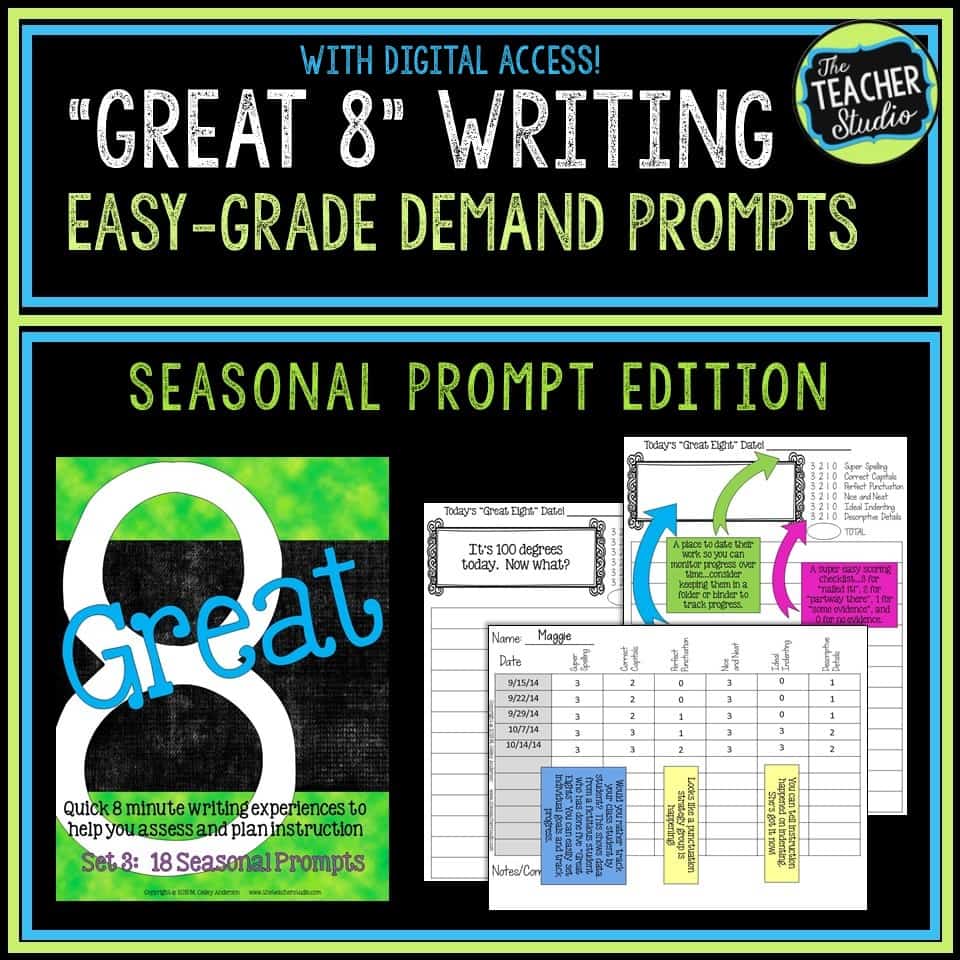 [/one-half-first]
[/one-half-first]
[one-half]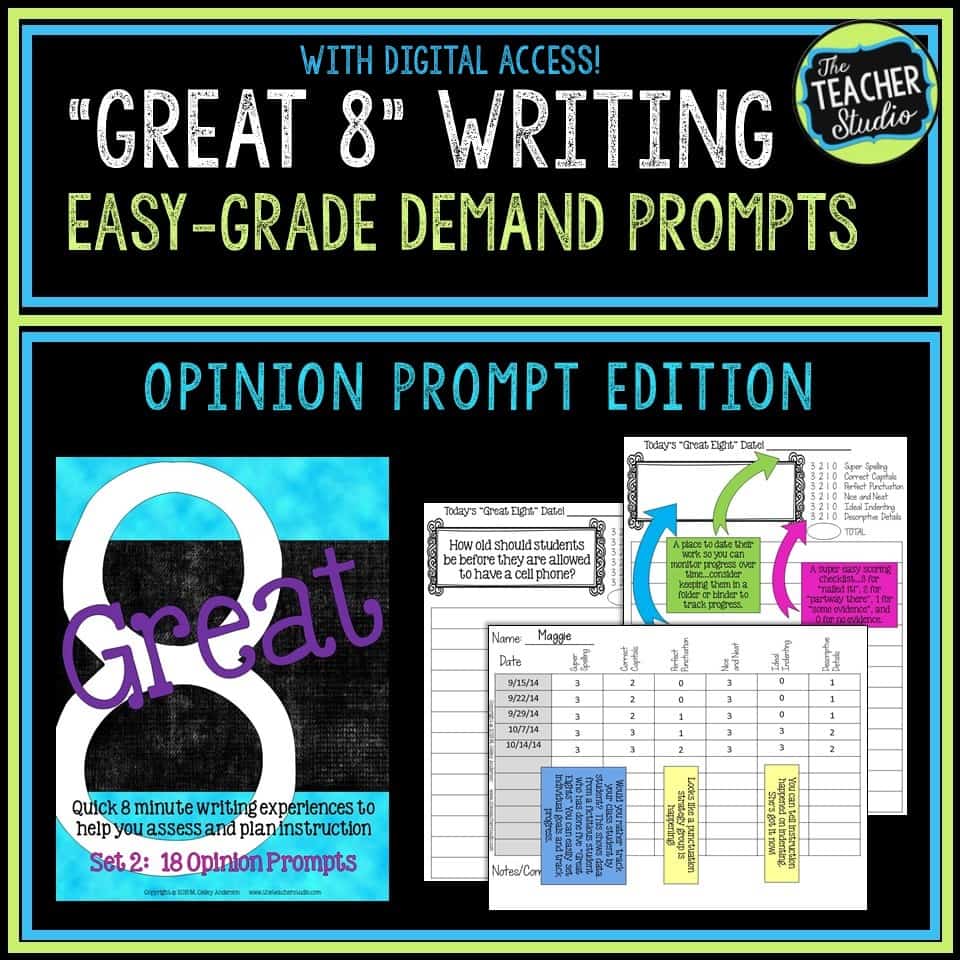 [/one-half]
[/one-half]

